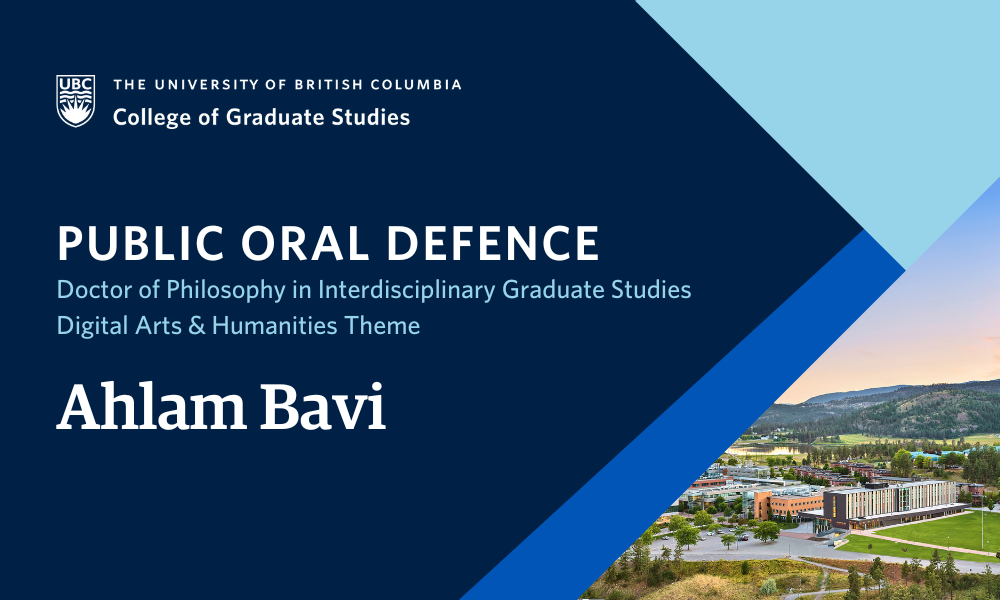
- This event has passed.
Dissertation Defence: Seeing Through Touch: Creating Inclusive Experiences for Blind and Partially Sighted Museum Visitors Through 3D Printing
May 12 at 9:00 am - 1:00 pm

Ahlam Bavi, supervised by Dr. Hussein Keshani and Dr. Karis Shearer, will defend their dissertation titled “Seeing Through Touch: Creating Inclusive Experiences for Blind and Partially Sighted Museum Visitors Through 3D Printing” in partial fulfillment of the requirements for the degree of Doctor of Philosophy in Interdisciplinary Graduate Studies – Digital Arts & Humanities Theme.
An abstract for Ahlam Bavi’s dissertation is included below.
Examinations are open to all members of the campus community as well as the general public. Please email hussein.keshani@ubc.ca to receive the Zoom link for this exam.
Abstract
This thesis explores how museums and cultural institutions can improve blind and partially sighted (BPS) individuals’ access to cultural heritage. Based on initial consultations with the Canadian National Institute for the Blind and through partnering with the Winnipeg Art Gallery-Qaumajuq (WAG-Q) and the University of Manitoba’s Department of Physics and Astronomy Makerspace facility, this research examines the potential of 3D modelling and printing to remediate cultural heritage, particularly that of underrepresented communities such as special needs people or people from marginalized communities who does not have access to the existing setting within memory institutions, in order to facilitate accessibility. The study also addresses issues of authenticity and intellectual property that arise in research partnerships and remediation efforts. It emphasizes the importance of culturally sensitive, ethical, and collaborative approaches to making museum collections accessible to BPS visitors. The goal is to ensure that most visitors, regardless of their abilities, can engage with and appreciate cultural heritages. This is accomplished using an interdisciplinary and mixed-methods approach rooted in partnerships that combine aspects of Critical Race Theory (CRT) and Design Theory. Previous scholarship and museum practices concerned with BPS audiences have focused on remediating Euro-American art with specialized, costly technologies and without an in-depth consideration of intellectual property and interactivity. In contrast, the key findings and outcomes of this thesis show: 1) the necessity of establishing clear communication and mutual trust from the outset and developing transparent agreements regarding the ownership, control, and sharing of data or cultural materials, and to ensure ethical protocols, to protect the rights and interests of these communities; 2) that high-quality remediated models of cultural items can be produced even with limited resources and the use of open-access tools, making heritage accessibility more achievable, and; 3) how effective design and tool selection processes for how museums can enhance accessibility for BPS individuals through tactile experiences, digitization, and gamification using 3D technologies, all while adhering to an ethical digitization process that respects cultural sensitivity and ownership rights.